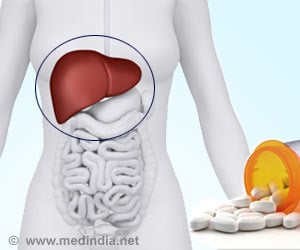The hepatitis C virus is a bloodborne virus and the most common modes of infection are through exposure to small quantities of blood.

‘Antiviral medicines can cure more than 95% of persons with hepatitis C infection, thereby reducing the risk of death from liver cancer and cirrhosis, but access to diagnosis and treatment is low.’





Charlie Rice, the Maurice R. and Corinne P. Greenberg Professor in Virology at The Rockefeller University, has been working for decades to develop just that; in fact, his previous research lead to the development of the cure for hepatitis C infection that first became available in 2015. But his research, and the field in general, have been stymied by a lack of animal models that can be used to study the interaction between the disease and the immune system. Now, Rice and his colleagues have uncovered a method to mimic the disease in rodents. In work published in Science, the team of researchers describes how they discovered a virus that is closely related to hepatitis C, but is able to infect rats and mice. The researchers found that this new animal model recapitulates much of the human disease, a breakthrough that should accelerate hepatitis C vaccine research.
A breakthrough from the streets of New York
Researchers around the world rely heavily on animal models to study human disease. "We need to use animals to watch the disease develop over time and monitor how the immune system responds," explains Eva Billerbeck, a research associate in the Rice lab and lead author on the new research. "This hasn't been feasible for the hepatitis C virus, which has made our work very difficult."
The problem is that hepatitis C is a highly specific virus, infecting only humans and chimpanzees. This means that researchers must rely on blood samples and liver biopsies from infected patients to study the disease. These limited and infrequent samples provide only partial information about how the disease progresses and make it difficult to test new vaccines.
Advertisement
Mouse models for acute and chronic hepatitis C
Advertisement
There was one notable difference, however. "In human patients, hepatitis C virus infection has two outcomes," Billerbeck explains. "Initially, it is acute, and a small percentage of patients fully recover from infection. However, most people progress to a chronic form of the disease that will continue to affect them unless they are treated." Rice and his team found that mice with a healthy immune system experience the acute form of the disease and then recover, while immune-compromised animals become chronically infected and remain so even after their immune systems are restored.
The researchers are now using their new animal models to gain insight into how hepatitis C infection progresses, and to understand how the body reacts. "This research will help unravel mechanisms of liver infection, virus clearance, and disease mechanisms," Rice says, " which should prove valuable as we work to develop and test hepatitis C vaccines that can help to finally eradicate the disease around the world."
Source-Eurekalert















